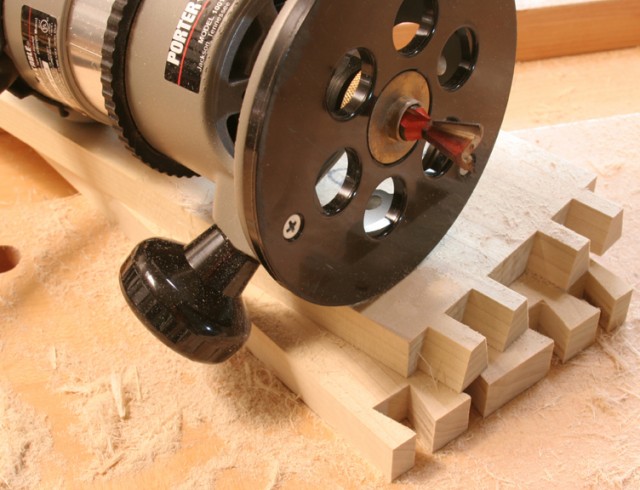
I have a Porter Cable model 6902 router. The nameplate indicates that it is rated at 10 amps and 23000 RPM. I cannot find the horsepower in the owner’s manual or on the router motor. From its size, I assume that it is about 1 to 1.5 HP. Router speed is not controllable. A .50″ and a .25″ collet are available. Normally, I use carbide bits that are about 1″ in diameter. I am interested in using a pair of rail and stile bits and possibly a panel-raising bit. These range from 1.5″ to 3″ in diameter. I contacted Porter Cable to see if the router is powerful enough to use these bits if I take light cuts. I was also concerned about the speed. I asked if an aftermarket speed controller could or should be used but have not received a response. (Very disappointing). My questions are:
1. Is the router powerful enough to use large diameter bits?
2. Do I need to reduce the router speed?
3. If I need to reduce the router speed, can I use an aftermarket speed controller or do I need to start saving for a variable speed router?
Linda Haus: First, the dead giveaway on your router’s horsepower is the “type” of router. This will be listed on a stamped metal plate that you’ll find on the motor. If it’s a Type 7 or Type 8 P-C, you have a 1.75 horsepower motor. If you have a Type 6 (or any smaller type number), you have a 1.5 horsepower router.
As for the rail and stile bits that you’re interested in, it’s really recommended that those be run at an rpm of 12,000 to 14,000. It’s also recommended that you use a minimum 2 horsepower (variable speed) router, so you can get to those rpm speeds. It’s really a safety issue.
It’s also better, for safety reasons, that your bits have a 1/2″ diameter shank rather than a 1/4″ – if you’re whipping your bits around at those speeds, it’s possible that a 1/4″ shank could snap.
If you try to use your 690 for the bits you’re talking about, at the speeds they require, you could burn it out. You’ll be much happier – and safer – if you go with option number three, and start saving for a variable speed router. Otherwise, you’re going to be spending all day in the shop making those small passes.
Michael Dresdner: That router is a bit undersized, but if you are very judicious about how much cut you take per pass, you can get away with it. I would definitely reduce the router speed with a 3″ bit or you are likely to get burning at the tips. Though there is much debate on whether speed controllers are bad for a motor over the long haul, it certainly is a viable way to get you through the occasional job like this. However, you’ll notice that with reduced speed comes an apparent reduction in torque as well, meaning you will have to take even lighter cuts lest you stall the motor. Are you sure you don’t want to borrow a friend’s large, speed controlled router for this job? This might be the ideal time to make some close acquaintances at your local woodworking guild.





